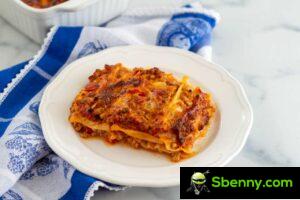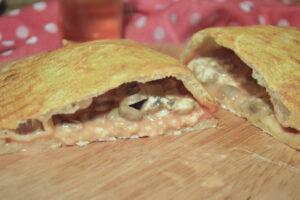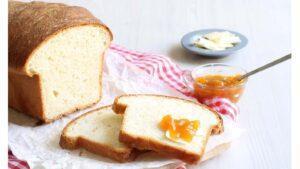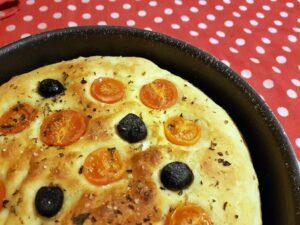Pinsa, the recipe for Roman squash
There Roman pinsa it is a very recent preparation which has already become famous throughout the country, different from the classic pizza or focaccia. It is a sort of very soft flat bread, for example high hydration and long leavening, light and fluffy, to be prepared at least 24 hours in advance and seasoned with your favorite ingredients. The classic shape of the Roman pinsa is rectangular or oval, it is rolled out and baked for a first cooking, seasoned and put back in the oven for finishing. The characteristic of this leavened product is that it is prepared with a particular flour, the appropriate one pinsa flour, based on a mix of soy, rice and wheat. In our recipe we propose a version of the pinsa with a leavening of approximately 26 hours total, but you can also opt for a dough that rises in the refrigerator for 48 hours: the result will be a very light and very digestible pinsa. We seasoned it with tomato, mozzarella and bacon, but you can customize it to your liking: margherita, sausage and friggitelli, pan-fried garden vegetables… unleash your imagination!
Ingredients for 6 people
- Flour for pinsa: 1 kg
- Fresh brewer’s yeast: 15 g
- Cold fridge water: 750 ml
- Fine salt: 20 g
- Extra virgin olive oil: 30 g
- Remilled semolina flour: to taste
- Tomato puree: to taste
- Mozzarella: to taste
- Basil: to taste
- Preparation: 35 minutes
- Cooking: 15 minutes
- Total: 50 minutes
- Calories: 612 kcal/person
Preparation
In a large bowl, pour the pinsa flour, which you can find in well-stocked supermarkets, the crumbled fresh brewer’s yeast and 700 grams of cold fridge water, mixing well with a spoon.

Mix until completely absorbed, then transfer the dough to a work surface.

Start kneading with your hands and don’t worry if the dough is slightly sticky: continue manipulating the mixture until you obtain a smooth and compact dough. Transfer it to a bowl and pour in the salt.

Now add the oil and the remaining 50 ml of water. Continue kneading until the oil and water are perfectly absorbed and the dough is soft and slightly sticky.

Bring the dough back to the work surface after lightly flouring it. Make a few reinforcement folds, taking the upper side of the dough and folding it towards the center. Do the same with the bottom side too.

Transfer the dough into a bowl, preferably glass, and cover it with a clean cloth. Let it rest for 15 minutes. Once the resting time has passed, move it back onto the floured work surface and proceed to create folds again, taking the edges of the dough with your fingertips and bringing them back towards the centre. Seal the edges well and turn the dough over to form a ball.

Proceed to rolling the dough: with the palms of your hands make rotary movements towards you, so that the folds facing the work surface seal perfectly. Place the dough in the bowl and cover with cling film. Let rise at room temperature until doubled: it will take about 2 hours. When the dough has risen, move it to the refrigerator and leave it to rest for 24 hours.

Prepare a tray with semolina flour and moisten your hands with water. Take the dough back from the fridge and form balls of 270 grams each, you should get 6 portions. Place each ball in the bowl with the semolina flour. Then start creating folds to reinforce the dough: take the upper edge and close it towards the center.

Now take the lower edge and with your fingertips pinch it with the upper edge, so as to seal them perfectly. Repeat the same operation with the left flap and the right flap, stapling them to seal them.

Turn the dough balls over so that the smooth side is facing upwards. Place them on a tray dusted with semolina, spaced apart from each other, and cover them with another tray. Let them rise for at least 3 hours, until doubled.

Once the leavening time has passed, start working the first loaf after placing it on the work surface covered with a lot of semolina flour. Go and crush the dough with your fingertips, distributing the air in the dough and giving it a shape as rectangular as possible.

Transfer the dough onto a very hot baking tray, without adding oil. If you prefer or if you don’t have perfectly non-stick baking trays, you can heat a refractory stone in advance and cook the pinsa on the hot stone. Once the dough has been transferred, proceed to cover it with tomato sauce and add a drizzle of olive oil.

Bake in a preheated static oven at 180°C for 10 minutes, to carry out a first pre-cooking. Then take out of the oven and season with diced mozzarella, for a basic version.

If you want, you can add other ingredients: in our case we also added slices of seasoned bacon. Bake for another 3-4 minutes at 180°C, the time for the mozzarella to melt. Serve your Roman pinsa immediately, piping hot.

Tips and tricks
You can leave the Roman pinsa dough in the refrigerator for 48 hours, to make it even more digestible. In that case, however, you will have to halve the dose of yeast.
If you can’t find pinsa flour you can use a mix of rice, soy and wheat flour. Pinsa flour is in fact a combination of these three flours and, in particular, soy flour is essential for the perfect success of Roman pinsa, as it contains less starch and a very high protein content. However, we do not recommend using 0 or 00 flour.
We advise you to heat the pan in the oven before rolling out the pinsa. This way with the hot pan you will prevent the dough from sticking.
You can also use the mixer, respecting the dosage of the ingredients and the procedure.
You can replace fresh brewer’s yeast with dry yeast granulesusing 7.5 grams.
storage
You can save the grips for 1 day in the refrigeratorinside an airtight container, and then heat it as needed.
We do not recommend freezing them.
Ingredients for 6 people
- Flour for pinsa: 1 kg
- Fresh brewer’s yeast: 15 g
- Cold fridge water: 750 ml
- Fine salt: 20 g
- Extra virgin olive oil: 30 g
- Remilled semolina flour: to taste
- Tomato puree: to taste
- Mozzarella: to taste
- Basil: to taste
- Preparation: 35 minutes
- Cooking: 15 minutes
- Total: 50 minutes
- Calories: 612 kcal/person







Start a new Thread